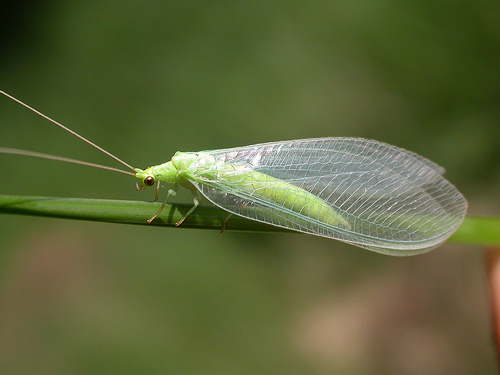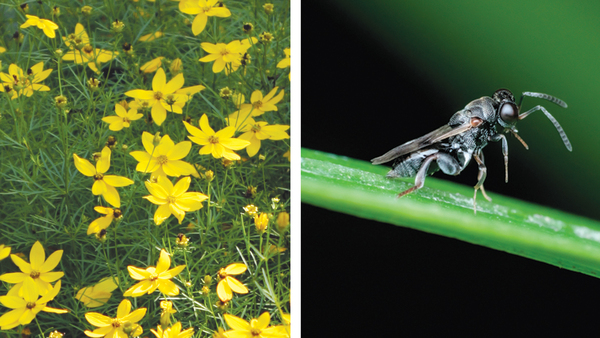
I thought it would be nice to have a list of some of the beneficial insects in the predatory group that work hard to keep your garden free of pests. Even if they don’t eliminate every problem, they do keep things so balanced that you’re sure to have a great harvest in the vegetable garden and lovely blooms in the perennial bed. Although the insects below are useful pest predators, they can also double as an effective pollinating insect.
Predatory Insect List
- Spider – People are often repelled by these eight-legged creatures, but spiders are a friend to the garden. They eat more insects in the garden than birds.
- Green Lacewing – Also called the “Aphid Lion”, it’s the green lacewing larva that eat 60 aphids per hour. They also eat other soft-bodied insects such as mites, mealybugs, spider mites, whiteflies, scale, and thrips. The adult lacewing is a pollinator.
- Ladybug – Adult ladybugs will eat 5,000 aphids by the time they die. Other ladybug prey includes bean thrips, mites, chinch bugs, Colorado potato beetle, asparagus beetles.
- Ladybug Larva – While these spiny little creatures aren’t much to look at, they can eat 50-70 aphids per day. Have a prehistoric alligator look to them; black and orange – he has a bad guy appearance but gardeners can rest assured he’s one of the good ones.
- Hoverfly – Also called “Syrphid Flies” the larva also feeds on soft-bodied pest insects.
- Praying Mantid – While mantids certainly eat garden pests, they aren’t big consumers and sometimes grab a good guy or two in the process.
- Minute Pirate Bug – These tiny predators control small caterpillars, aphids, mites, and thrips. They are especially handy in the greenhouse as they like high humidity.
- Spined Soldier Bug – Potato beetles, tomato hornworms, cabbage worms end up getting “harpooned” by this predator.
- Trichogramma Wasp – This wasp is one in a group of parasitic wasps that lay their eggs inside the larva of garden pests such as cabbage worms, cutworms, and borers.
- Ground Beetles – You may not see them much in the day light hours as they tend to hide among the plant debris on the ground. But at night – they come out hungry!
- Assassin Bug – These predators don’t have much in the looks department but do have a voracious appetite for plant pests.


















Comments
Log in or create an account to post a comment.
Sign up Log in